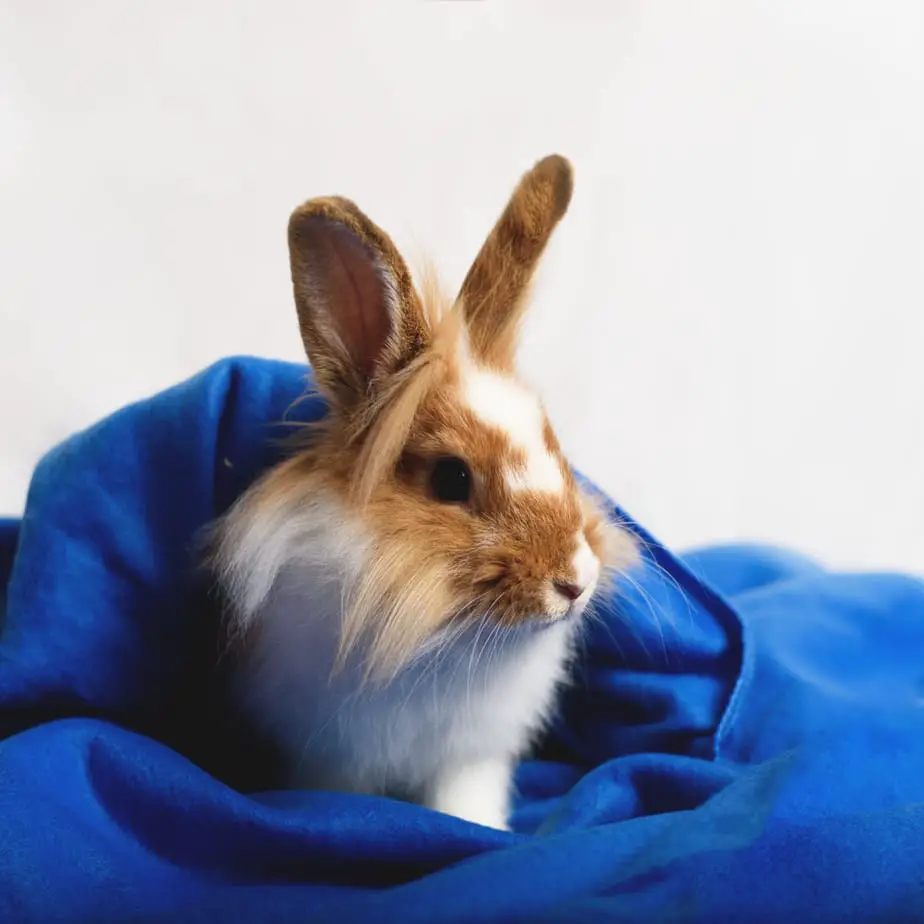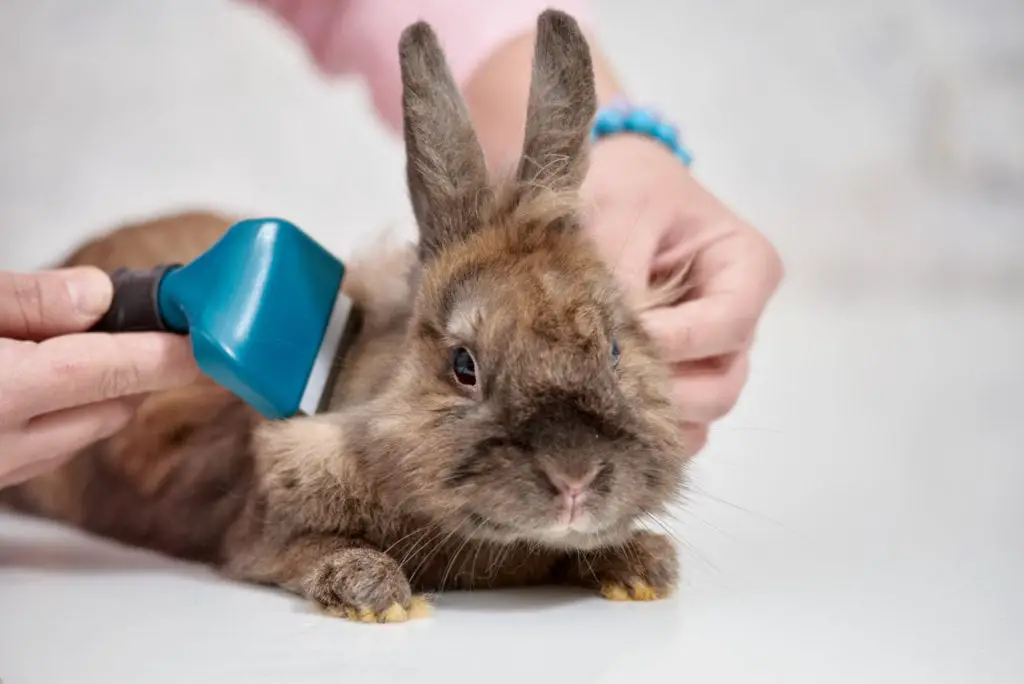
With cold weather approaching, you may wonder if your rabbit is going to grow a thicker coat to stay warm. This is a great question! Especially for domestic rabbits.
Rabbits will grow thicker fur to stay warm in colder weather. However, rabbits that are kept inside or in an environment with a consistent temperature will not grow a very thick coat. A rabbit’s fur will grow and shed when needed to keep them comfortable.
What Temperature Is Too Cold for Rabbits?
Rabbits are most comfortable in temperatures between 60-65 degrees Fahrenheit and can even be comfortable in temperatures in the 40-45 degree range. By growing and shedding their fur, rabbits are able to naturally regulate their body heat. When a rabbit begins to feel cold, it will grow thicker fur to prevent hypothermia.
Signs of hypothermia include body temperature dropping, shivering, looking shocked, and other signs of distress. Your rabbit may be in danger when temperatures get down to 20 degrees. At that point, you will want to consider other ways to help keep your rabbit warm.
How Can I Keep My Rabbit From Freezing?
Domestic rabbits need a regulated environment to prevent hypothermia. Wild rabbits do not share the same issues, as they have adapted themselves to the extremes of their environment. To prevent hypothermia, here are a few ideas:
- House your rabbit indoors in a room with good ventilation in the rabbit’s preferred temperature of 40-65 degrees Fahrenheit
- Provide hay for your rabbit to burrow in for warmth
- Make sure your rabbit’s water is fresh and not frozen
- For outdoor domestic rabbits, keep them sheltered from rain or snow in an outbuilding and monitor for freezing temperatures
If you begin to see symptoms of hypothermia in your rabbit, you will want to move them into a warmer environment. You can wrap them in towels or a heating pad on a low setting or keep a hot water bottle beside them. Seek veterinarian assistance.

What Temperature Is Too Hot for Rabbits?
As said before, the ideal temperature for a rabbit habitat is 60-65 degrees Fahrenheit. While rabbits can tolerate temperatures as high as 85 degrees, after that, your rabbit may be at risk of overheating. There is only so much shedding that a rabbit can do to regulate its body heat.
Signs of heatstroke include panting, lethargy, convulsions, and the reddening of ears. When temperatures get higher than 85, you will need to take extra measures to help keep your rabbit cool to prevent heat stroke. In most cases, heatstroke is fatal.
DID YOU KNOW? Rabbits use their ears to help regulate body temperature. Feeling your rabbit’s ears and seeing if they’re warm or cold can actually tell you a lot about the health of your rabbit! See my article Should a Rabbit’s Ears Be Warm? (Is He Sick?) to learn more.
How Can I Keep My Rabbit From Overheating?
Domestic rabbits also need a regulated environment to prevent heatstroke. Wild rabbits are able to keep cool by burrowing underground and staying in shaded areas. Unfortunately, overheating is fatal for most rabbits. However, there are some things you can do to prevent heat stroke:
- A fan can easily cool down your rabbit, but make sure that they have the ability to move away from the breeze if they get cold
- Place a wet, rung out towel over your rabbit’s cage to ensure shade and cooler airflow
- Marble tiles or slates for your rabbit to rest on is a great option that does not need to be regulated
- Brushing your rabbit will remove any excess fur from shedding that may be trapping in heat
If you begin to see symptoms of heatstroke in your rabbit, DO NOT submerge them in water. Though that may be your first response, the shock could be fatal. Instead, dampen your rabbit’s fur with water and take them to a veterinarian.
Caring for a rabbit in hot weather is a bit of an art, but a few simple tricks can actually make the difference between a trip to the vet for heatstroke or not. To see some cool tricks to keep your rabbit comfortable in the heat, see my article How to Care for a Rabbit in Hot Weather: 10 Vital Tips here.
Will Rabbits Shed Their Winter Coat?
Rabbits will most definitely shed their winter coat. Once spring begins to roll around, your rabbit will begin shedding its thicker fur for a thinner, lighter summer coat. This shedding period can last anywhere from 2-6 weeks.
On the shorter side of the spectrum, within 2 weeks your rabbit will shed a large amount of its fur in a quick period of time. Expect to have a lot of fluff around. For the longer amount of time, the amount of fur your rabbit sheds will be a more consistent stream of fur. Expect the shedding to start slow, pick up a bit in the middle, and decline near the end of the sixth week.
How Should I Groom My Rabbit’s Winter Coat?

Helping your rabbit maintain their coat, especially during shedding season, is very important. Just like cats, rabbits get hairballs stuck in their throats or stomachs from self-cleaning. Unfortunately, rabbits are unable to regurgitate the hairballs.
You will want to brush your rabbit daily during the heavy shedding period (when they shed their winter coat) and at least weekly during their lighter shedding periods. Brushing your rabbit regularly will prevent digestion problems that may arise from your rabbit’s self-cleaning and help prevent matted fur.
Here are some brushing tips to help keep your rabbit looking and feeling the best it can:
- Because your rabbit’s skin is delicate, be gentle and use a brush specifically designed for rabbits
- Before brushing, lift-off tufts of fur that may come off during heavy shedding season
- DO NOT cut your rabbit’s fur as you may also cut their skin
- If your rabbit’s fur is matted, use a mat splitter or mat rake to gently work out the matting
Growing and Shedding Fur Is Natural!
If your rabbit is growing a thicker coat, don’t worry! It is completely natural! As winter begins, rabbits will naturally grow a thicker coat to keep themselves warm.
Make sure to be aware of the temperatures that your rabbit is inhabiting so that you can help your rabbit get warm or keep cool when needed. Typically, you will want to keep your rabbit in a consistent environment to help keep them calm and comfortable.
Additionally, watch your rabbit’s shedding patterns so that you are ready to step in and brush all the extra fur from their furry little backs. If you take the proper steps to groom them, your rabbit will be less likely to have hairballs and digestion problems.
Other Useful Articles
- The 6 Easiest Rabbit Breeds to Take Care Of – If you’re worried about how much your rabbit (or future rabbit) might shed, take a look at this article which will give you a rundown of the easiest rabbit breeds to take care of. This includes one breed that’s well known for their very minimal shedding!
